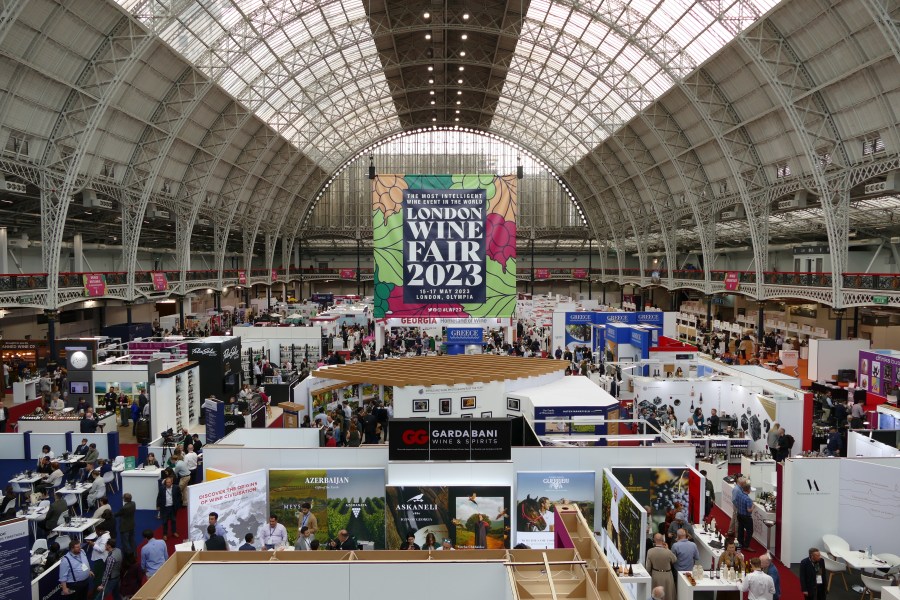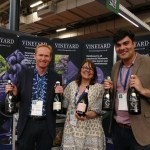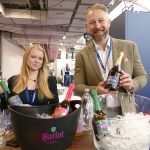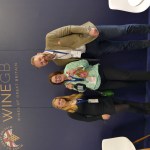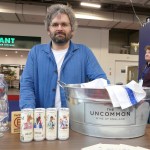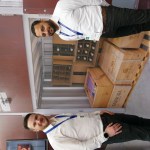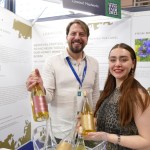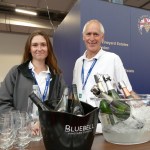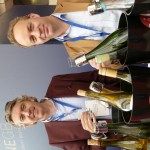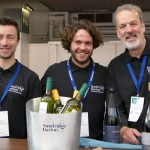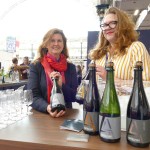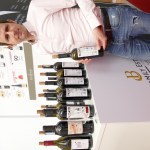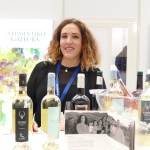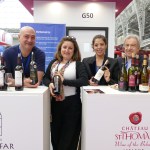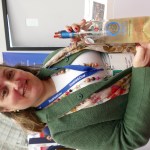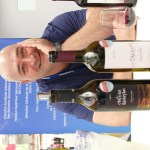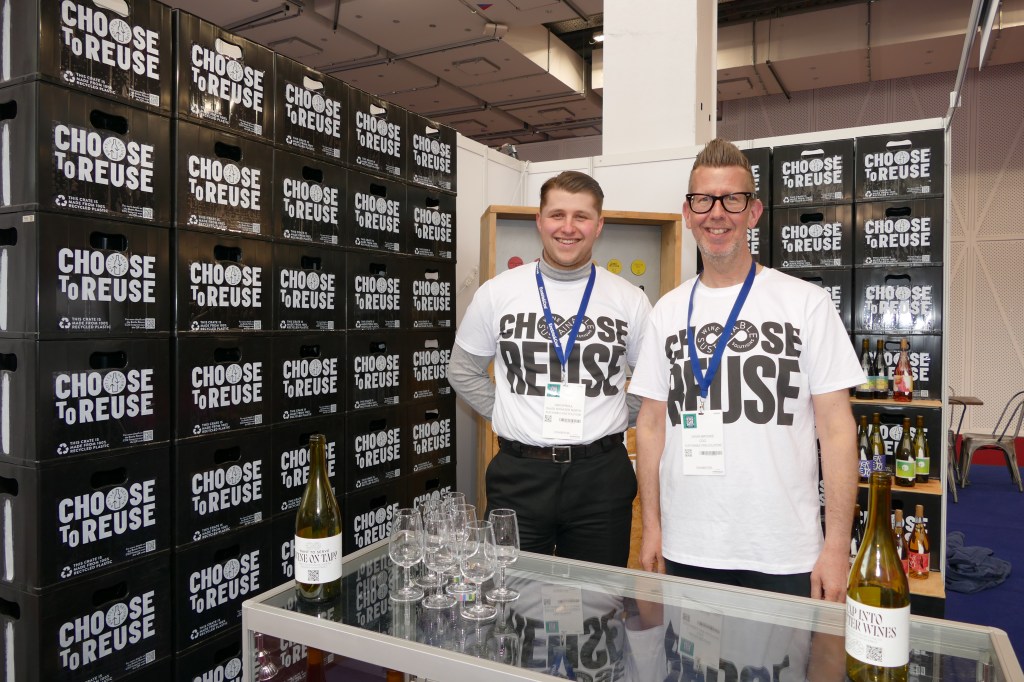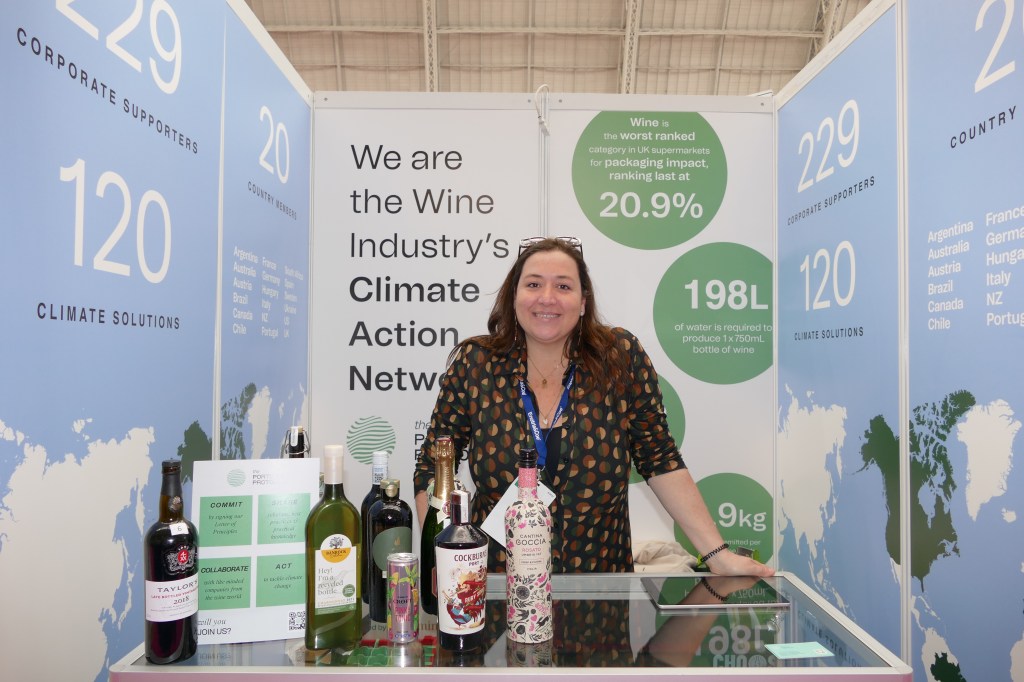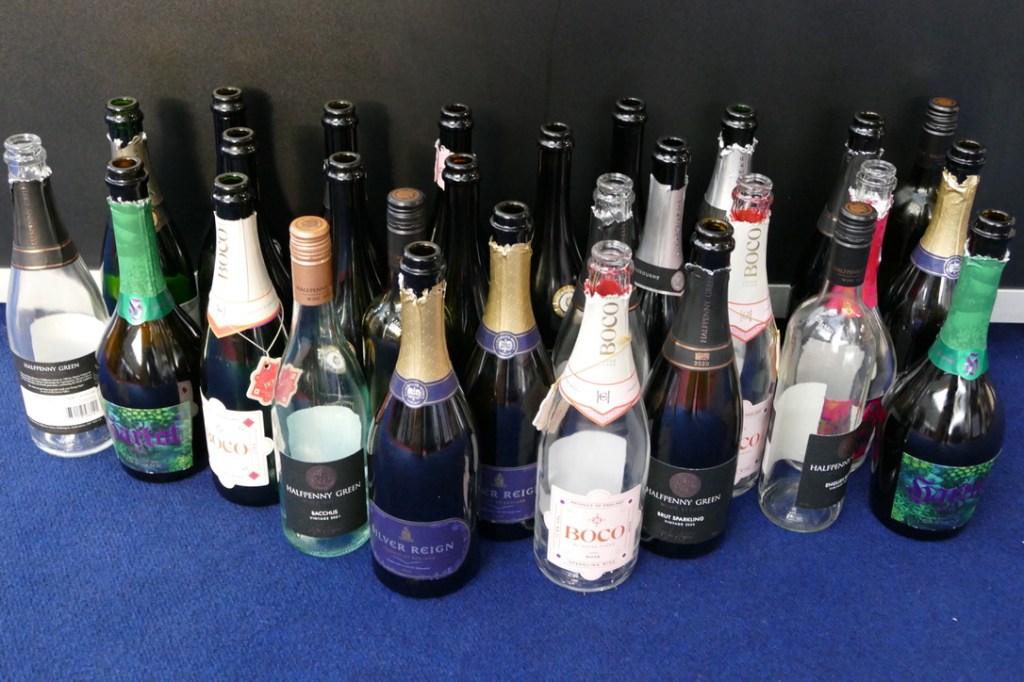The London Wine Fair took place at Olympia from 15-17 May. Vineyard magazine was pleased to be able to invite three producers to join us at the show, offering visitors to the Vineyard stand tastings of wines that have featured in recent editions alongside some new releases. On Monday Vineyard welcomed the team from Greyfriars which is based in Surrey. Stopham Vineyard in West Sussex were our guests on Tuesday and Gusbourne in Kent joined the Vineyard team for the final day of the show. Vineyard would like to thank all those who joined us for what was an amazingly busy three days.
The WineGB stand was crowded with visitors for all three days of the show. Artelium, Halfpenny Green, Defined Wine, Court Garden, Bluebell Vineyard, Silverhand Estate, Sandridge Barton and Everflyht were part of the WineGB stand for the first time. Everflyht were able to offer visitors tastings of the NV Brut and their Rosé De Saignee 2019. Luke Spalding, the general manager, described the Rosé as “a field to bottle wine.” The new Rosé De Saignee will be released in June 2023 and visitors to the WineGB stand were able to get a first look at the new release.
Returning to the London Wine Fair with WineGB were Denbies, being one of the UK’s largest producers, along with The Uncommon who were able to showcase both English sparkling wine and spritzers in the alternative format of a can. House of Coren, whose brand has been a breath of fresh air since their launch several years ago were inviting trade buyers to sample their new Boco Rosé.
The London Wine fair is always able to provide visitors with something a bit different and this year was no exception. Loxwood Meadworks in west Sussex produce an English Honey Wine with a surprising balance of honey and acidity. Owners Danny Bacon and Emily Lambert were at the show introducing their products to the adventurous and the curious. Stocked at the Dorchester and London’s oldest wine bar Gordon’s Wine Bar, Loxwood Meadworks are going from strength to strength. Emily is a Ritz trained sommelier and Danny is the organiser of a medieval jousting festival and working together they have an eco-conscious brand that appeals on so many levels. Providing a local option to add to a wine list in the off dry category, Loxwood Meadworks are also signed up to One Percent for the Planet (a global initiative where members all give 1% of turnover to create a healthier planet.)
The Wine Cellars based in Fulham and Hammersmith were on hand to inform visitors about the services they offer. Alongside wine storage for personal use the company are able to offer temporary solutions for businesses that might have had breakdowns in their wine fridges or may need temporary storage whilst they refit or move premises.
Italy
Throughout the three days of the show, visitors were treated to talks, debates and masterclasses. On Tuesday morning the Vermentino grape from producers of the island of Sardinia provided a fascinating look at a grape variety that can create wines in such varying styles. In the north east of Sardinia is Gallura, which has a unique pink granite rock covered by sand. This sandy soil means there is no phylloxera and so some of the vines are not grafted. Gallura also has mild winters with rain during the dormancy period. The Vermentino grape loves the sea breeze and retains acidity in high temperatures. It was described by Frederica Zanghirella of the UK Sommelier association as “vibrant and exciting but also versatile,” enabling the production of wines ranging from light and refreshing to full bodied and quirky. “It is a grape variety with growing popularity in the UK because it is great with food,” explained Frederica. Nearly six million bottles are produced a year from 40 wineries and Frederica was able to talk the audience through a selection of wines with different styles and flavour profiles. Lagrimedda – Cantina Li Seddi 2022 was the second of eight wines and was interesting in that it was made from ungrafted vines allowing for a longer lifespan, and an increase in grape quality.
Also within the Italy section of the London Wine Fair, Vineyard magazine were delighted to meet Matteo Parolari of the Bosio Family Estate Piedmont, Italy. It was interesting to explore the various grape varieties within their organic wine range, Passato.
Education Zone
On Tuesday afternoon in the Education Zone Michael Karams introduced the wine making history of Lebanon to a packed audience. Michael summed up this history in five ways:
Old: Wine production in Lebanon is ancient. Michael explained: “The Phoenicians sold wine, glass and purple dye to Greece, Rome and Carthage so in effect they were the first wine merchants.”
Small: “Lebanon is a small country about the size of Yorkshire,” said Michael. The annual production for the country is 10 million bottles. Putting that in context Michael compared this figure with the 350 million bottles of wine produced in Brazil.
Heavily influenced by France: Lebanon was part of the mandate system and as such under the control of France for 23 years after the First World War. At that time French soldiers were allocated 1.5 litres of wine a day and so a wine industry was created. When Lebanon became independent in 1943 the country had an established wine industry.
High: “Mountains are at the forefront of Lebanese consciousness,” explained Michael. The lowest vines are planted just below 1,000m above sea level and can still be found at 2,000m above sea level. Snow melt provides plenty of water.
Diverse: There are 45 different varieties across the country. The principal Indiginous grapes are Marweh and Obeidy.
Lebanon
Vineyard Magazine caught up with three producers from Lebanon that are part of the Reservin Collective. Wines carrying the Reservin label are all produced by vineyards near to or inside protected areas. Wine makers that are part of Reservin are from four countries in the Mediterranean, being Tunisia, Italy, France and Lebanon and all share the same ethos. They are committed to sustainable viticulture and aware of the unique historical links of the region to the production of wine.
Eddy Naim is the winemaker at family run Chateau Qanafar and he explained that he feels “wine is made in the vineyard,” and so they only work with grapes they have grown from their own vines. The vines are planted at 1200m above sea level harvested by hand and the vineyard incorporates minimal intervention practices. Blanc de Qanafar is a Sauvignon Blanc with a beautiful balance. Chateau De Qanafar 2015 is an unfiltered and unfined red wine blend of Syrah and Cabernet Sauvignon aged in French oak for 12 months; it is a true reflection of the terrior.
Chateau St Thomas is a vineyard of the Bekaa valley. The vines are planted at 1,350m above sea level and include the indigenous grape variety Obeidy and the winemaker at Chateau St Thomas is working on the development of other indigenous varieties. There is a single varietal wine available from the Odeidy grape but Obeidy is blended with Syrah and Carignan to produce Noor El Ain which refers to the world’s largest pink diamond but is also a Lebanese saying meaning ‘light of my eye’, being an expression of affection for someone that you are close too. The wine tastes like summer and with its diamond shaped bottom – a nod to the meaning behind the name – it’s sure to have been a favourite with all those who were introduced to Chateau St Thomas at the London Wine Fair.
Chateau Cana, planted 900m above sea level was the lowest of the Lebanese vineyards that Vineyard spoke to at the show. The vineyard has been working to ensure that the wines they produce reflect different styles. Chateau Cana are one of only two wineries in Lebanon to make wine from the Mekssassi grape. They also produce Jardin Secret using the Sobbaghieh grape which means colourant or dye. Chateau Cana are the only winery in Lebanon to use this grape. This variety not only has red skin but the flesh of the grape is red and even the grape stems have an unusual hue.
- Mike Wagstaff, Sarah Strangeway and Aaron Gilling from Greyfriars visit the Vineyard stand
- Marie from Stopham Vineyard
- Emily and Danny of Loxwood Meadworks
- Sarah from Gusbourne
Global blueprint for bottle reuse
How many different types of wine bottle are actually in use? What prevents a bottle from being reused? These are the million-dollar questions that a three-way partnership between The Porto Protocol, London Wine Fair and Sustainable Wine Solutions (SWS) hopes to answer.
The LWF23 Bottle Collection Initiative, the first edition of a yearly initiative, will categorise all waste bottles collected at the show according to bottle type, label and country. A post-event report, which will be the most comprehensive research into wine bottle reuse to date, will be published based on these results and help catalyse reuse bottle schemes by showing the number of bottle types in use; how many were reusable; and if they were not reusable, identify why.
The Porto Protocol, whose mission is to accelerate climate action in the wine world, jointly with SWS – the UK experts in wine bottle return – challenged LWF to platform this initiative. Although there are many instances when the bottle could be replaced by alternative formats, the glass bottle will still be around for years to come. However, the manufacturing of bottles is the single biggest contributor to carbon emissions within the wine industry.
An estimated 30,000 bottles (based on the number of the exhibitors, Bottlebooks data on the number of wines exhibitors upload and the number of bottles we recommend exhibitors provide per wine) will be collected during the three days of The Fair, which will generate significant data. Using the LWF waste as its benchmark, the report aims to bring awareness to the challenges facing the reuse supply chain and to measure progress year on year.
Recycling is no longer the preferred option for glass bottles going forward. In the UK alone there is a 70% recycling rate, meaning 30% of wine bottles end up in landfill. Several of Europe’s leading wine producing countries have already passed laws and initiated measures to encourage and enforce bottle reuse. It is expected that other countries will follow suit, so it is vital that producers understand how to manage this globally. Furthermore, resource scarcity and rising inflation since the start of the War in Ukraine, is putting significant pressure on producers. Within this context, reusing bottles makes financial sense and is an additional catalyst to environmental concerns.
Head of London Wine Fair, Hannah Tovey, commented: “Sustainability is the central theme for this year’s show and we are delighted to be platforming so many discussions, tastings and launches with a green agenda. The LWF23 Bottle Collection initiative takes this to another level, creating a practical solution for the circular economy. We are delighted to be the launch pad and look forward to seeing the resulting report and a roll out of the scheme to subsequent events around the world.”
Adrian Bridge, CEO, The Porto Protocol, commented: “This is a pioneering initiative that demonstrates the leadership role that the wine industry is taking on climate change issues. At the Porto Protocol we highlight the initiatives that members are involved in, with the aim of raising awareness and promoting change through providing case studies of solutions that work. The fact that legislation regarding packaging is being implemented and that the time frames are short – most government targets are 2030 – it is time to think hard about what the wine industry is doing and can do.”
Muriel Chatel, Managing Director, SWS, commented: “We believe that all bottles should be reusable, but if we want to bring change it is important to know what we are dealing with. How many bottles are actually in use? No one knows. We are hoping that gathering and sharing data from one of the biggest wine fairs in the world, will spring the industry from ambition into action and head down the road to standardisation.”
- Dan Sproul and Gavin Brooks from Sustainable Wine Solutions
- Cristina Crava from The Porto Protocol

